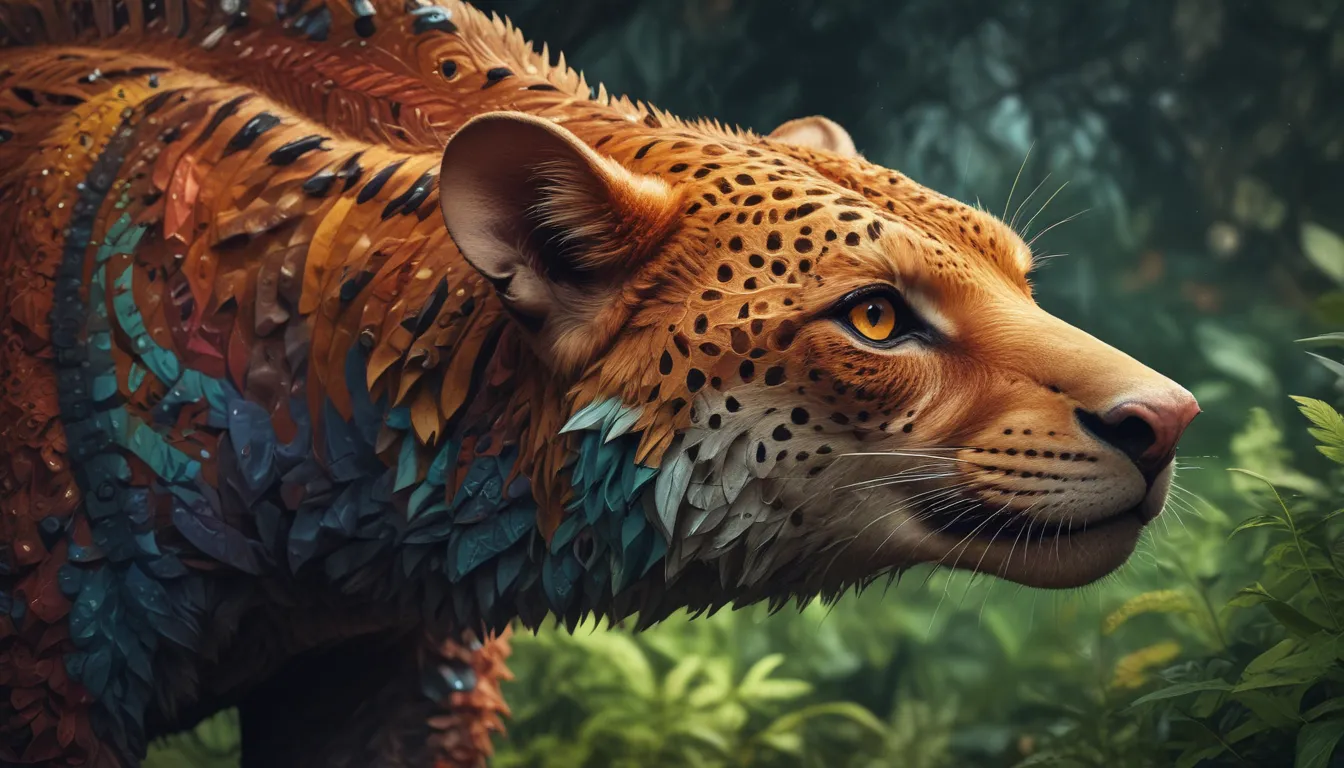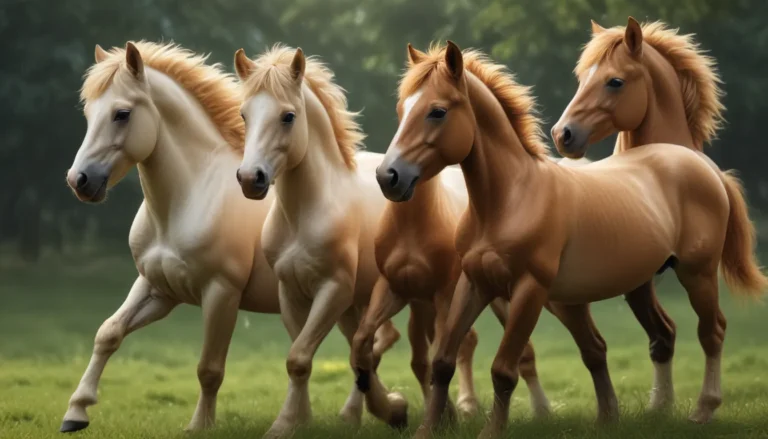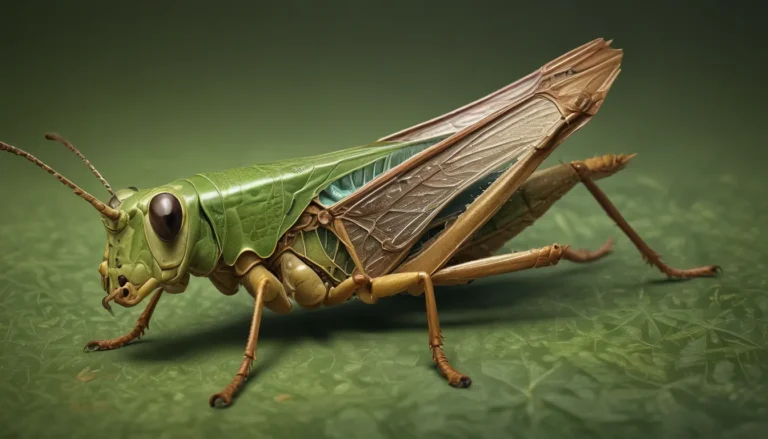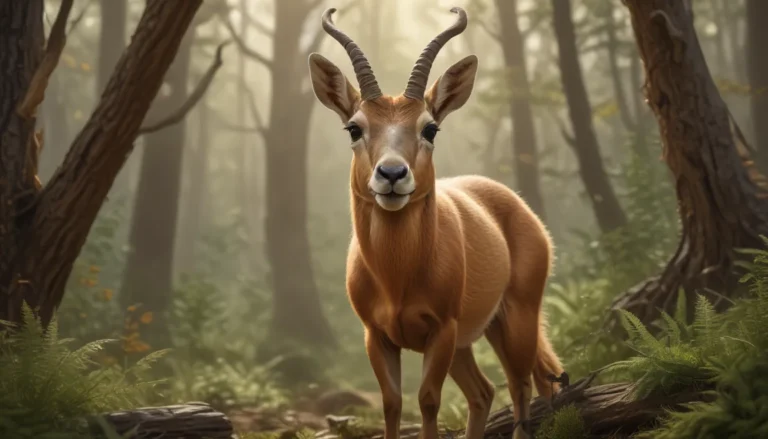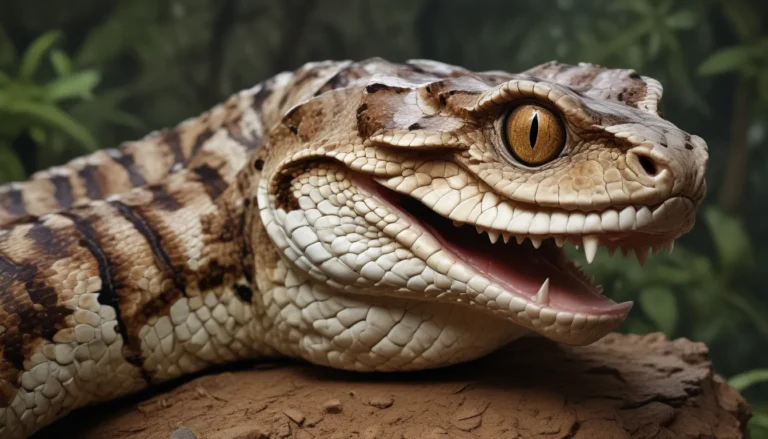The pictures we use in our articles might not show exactly what the words say. We choose these pictures to make you interested in reading more. The pictures work together with the words but don’t take their place. The words still tell you the important facts.
The animal kingdom is a wondrous realm filled with remarkable creatures that captivate our imagination with their unique abilities and peculiar characteristics. From the depths of the ocean to the highest mountaintops, animals never cease to surprise us with their diversity and uniqueness. In this article, we will embark on a captivating journey through the world of animals, uncovering 20 amazing and strange facts that will leave you in awe.
Unveiling the Wonders of the Animal Kingdom
The natural world is a treasure trove of bizarre and fascinating beings, each with its own set of extraordinary features and behaviors. Let's delve into the intriguing world of animals and discover the astonishing facts that make them truly extraordinary.
Key Takeaways:
- The animal kingdom is a testament to the diversity and wonder of nature, showcasing creatures with unique abilities and adaptations.
- From the Pink Fairy Armadillo's specialized shell structure to the Axolotl's regenerative skills, animals exhibit incredible resilience and adaptability in their environments.
The Pink Fairy Armadillo’s Unique Shell Structure
The Pink Fairy Armadillo, native to Argentina, is the smallest species of armadillo with a shell that allows it to maneuver through sandy environments effortlessly. Its shell is not attached to its body, enabling the armadillo to bury itself to escape predators and extreme temperatures.
The Axolotl’s Masterful Regeneration
The Axolotl, also known as the Mexican walking fish, possesses a remarkable ability to regenerate body parts, including limbs, tail, spinal cord, and even parts of its brain without scarring. This unique creature retains its larval features throughout its life, setting it apart from other salamanders.
The Star-Nosed Mole’s Lightning-Fast Eating
The Star-Nosed Mole, found in eastern North America, boasts a unique star-shaped appendage on its snout that is the fastest eating organ among all mammals. With 22 fleshy tentacles, this mole can identify and consume food in less than a quarter of a second, making it a formidable predator in its habitat.
The Aye-Aye’s Specialized Middle Finger
The Aye-Aye, a lemur native to Madagascar, utilizes its distinct elongated and thin middle finger to extract insects from tree bark with remarkable precision. Coupled with its acute sense of hearing, this unique appendage allows the Aye-Aye to locate and capture prey efficiently.
The Platypus: A Mammal That Lays Eggs
The Platypus, found in eastern Australia, stands out as one of the few mammals that lay eggs instead of giving birth to live young. With a duck-like bill, webbed feet, and the ability to detect electric fields of its prey, this creature embodies extraordinary features that defy conventional mammalian traits.
The Mantis Shrimp’s Exceptional Vision
The Mantis Shrimp, also known as "sea locusts," possesses the most complex eyes in the animal kingdom, capable of perceiving polarized light and detecting predators and prey with remarkable accuracy. With 12 to 16 types of photoreceptor cells, the Mantis Shrimp has a broad visual spectrum, allowing it to see ultraviolet, visible, and polarized light.
The Tardigrade: Nearly Indestructible Micro-Animal
The Tardigrade, or water bear, is an extremophile micro-animal that can withstand extreme conditions, including outer space, high levels of radiation, and temperatures ranging from near absolute zero to boiling point. This microscopic creature showcases unparalleled resilience in the face of adversity.
The Kakapo: A Flightless Parrot of New Zealand
The Kakapo, a critically endangered species native to New Zealand, is the world's only flightless parrot known for its unique mating ritual and distinctive booming call to attract mates. This nocturnal herbivore exemplifies the diversity of avian species with its remarkable attributes.
The Fossa: Madagascar’s Unique Predator
The Fossa, native to Madagascar, resembles a hybrid of a cat and mongoose, serving as the largest carnivorous mammal on the island. Known for its agility and tree-climbing abilities, this carnivore stands out as a unique predator in its ecosystem.
The Yeti Crab’s Adaptations to Extreme Environments
Discovered near Easter Island in 2005, the Yeti Crab thrives in hydrothermal vent ecosystems, enduring high-pressure, low-oxygen, and high-temperature conditions. This crustacean's silky blond setae covering its body gives it a distinctive appearance reminiscent of the mythical Yeti.
The Thorny Dragon’s Defense Mechanism
Native to Australia, the Thorny Dragon possesses a unique defense mechanism with conical spines covering its skin and the ability to change color for body temperature regulation. This creature can also collect water through capillary action from any part of its body, showcasing remarkable adaptations.
The Hummingbird Hawk-Moth: Nature’s Hummingbird Impersonator
The Hummingbird Hawk-Moth, found in Europe, Asia, and Africa, mimics hummingbirds in appearance and behavior, hovering in front of flowers while feeding with rapid wingbeats. This insect's ability to confuse observers into thinking it is a hummingbird highlights its remarkable adaptation to its environment.
The Pangolin: Earth’s Only Scaled Mammal
Native to Africa and Asia, the Pangolin is the only mammal covered in scales, capable of rolling into a tight ball for protection against predators. Unfortunately, this unique creature faces threats due to illegal trafficking driven by the demand for its scales in traditional medicine.
The Japanese Spider Crab’s Impressive Leg Span
The Japanese Spider Crab, inhabiting waters around Japan, boasts the longest leg span of any arthropod, reaching up to 12 feet from claw to claw. Despite its intimidating appearance, this gentle giant primarily feeds on shellfish and dead animals, showcasing its unique ecological role.
The Blue Dragon Nudibranch: Beauty with a Deadly Sting
The Blue Dragon Nudibranch, known as Glaucus atlanticus, is a stunning sea slug with a venomous sting that preys on Portuguese Man o' War. This tiny but deadly predator stores venomous nematocysts from its prey for self-defense, displaying a beautiful yet lethal adaptation.
The Shoebill’s Impressive Stare
The Shoebill, native to East Africa, is a large bird renowned for its distinctive appearance marked by a massive, shoe-shaped bill. This patient and solitary predator can stand still for extended periods, seizing the perfect moment to capture its prey.
The Gerenuk’s Unusual Feeding Behavior
Found in East Africa, the Gerenuk boasts a long neck and stands on its hind legs to feed on leaves and shoots beyond the reach of other gazelle species, earning the nickname "giraffe gazelle" for its distinctive feeding behavior.
The Red-Lipped Batfish: Walking on Ocean Floors
Native to the Galápagos Islands, the Red-Lipped Batfish features a bright red pout and unique walking behavior on the ocean floor with modified fins resembling legs. This quirky fish forages for small crustaceans and mollusks, showcasing its unconventional adaptation to seabed habitats.
The Saiga Antelope’s Unusual Facial Features
The Saiga Antelope, native to the Eurasian steppe, boasts a bulbous nose that aids in regulating air temperature and humidity for optimal breathing in extreme environments. This unique adaptation enables the Saiga to thrive in the harsh conditions of the Central Asian steppes.
The Narwhal’s Enigmatic Tusk
Known as the "unicorn of the sea," the Narwhal is a medium-sized whale inhabiting Arctic waters, distinguished by its long spiral tusk, actually an elongated tooth. The purpose of this tusk remains a subject of debate, with theories ranging from sensory organ to secondary sexual characteristic.
Delving Deeper into the Extraordinary
In conclusion, the animal kingdom is a boundless source of wonder, filled with creatures that defy expectations and inspire awe with their remarkable adaptations and behaviors. Each of the 20 amazing strange animal facts presented in this article provides a glimpse into the diverse and fascinating world of nature's creations. By exploring the mysteries of these extraordinary beings, we gain a deeper appreciation for the intricate tapestry of life on Earth.
FAQs: Exploring Further
What makes these strange animals unique?
Each of these animals possesses distinct traits and behaviors that set them apart from other species, showcasing the incredible diversity and adaptability of life in the animal kingdom.
Where can I learn more about strange animals?
To further discover the captivating world of strange animals, consider exploring documentaries, books, and online resources dedicated to wildlife. Zoos and aquariums also offer valuable opportunities to observe and learn about these remarkable creatures up close.
Trust in Our Commitment to Quality
Our dedication to providing trustworthy and engaging content is at the core of our mission. Each fact shared on our platform is contributed by real users like you, ensuring a diverse range of insights and information. With meticulous review by our dedicated editors, we uphold the highest standards of accuracy and reliability to deliver fascinating and credible content. Explore and learn with confidence, knowing that our commitment to quality and authenticity guides every step of your journey into the extraordinary world of animals.
